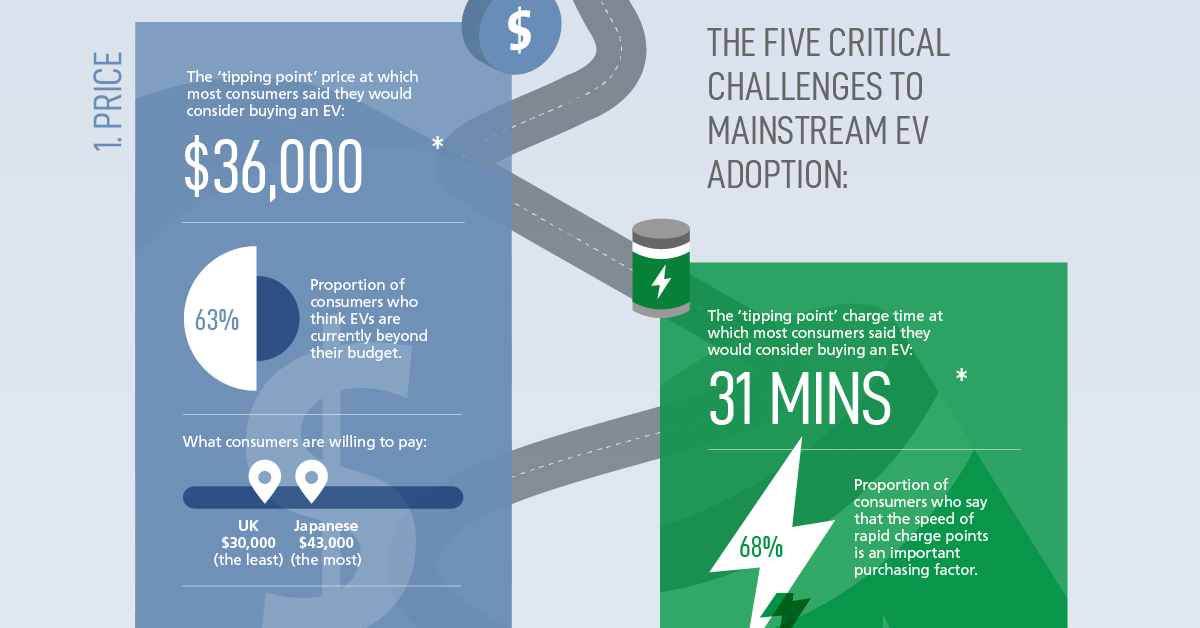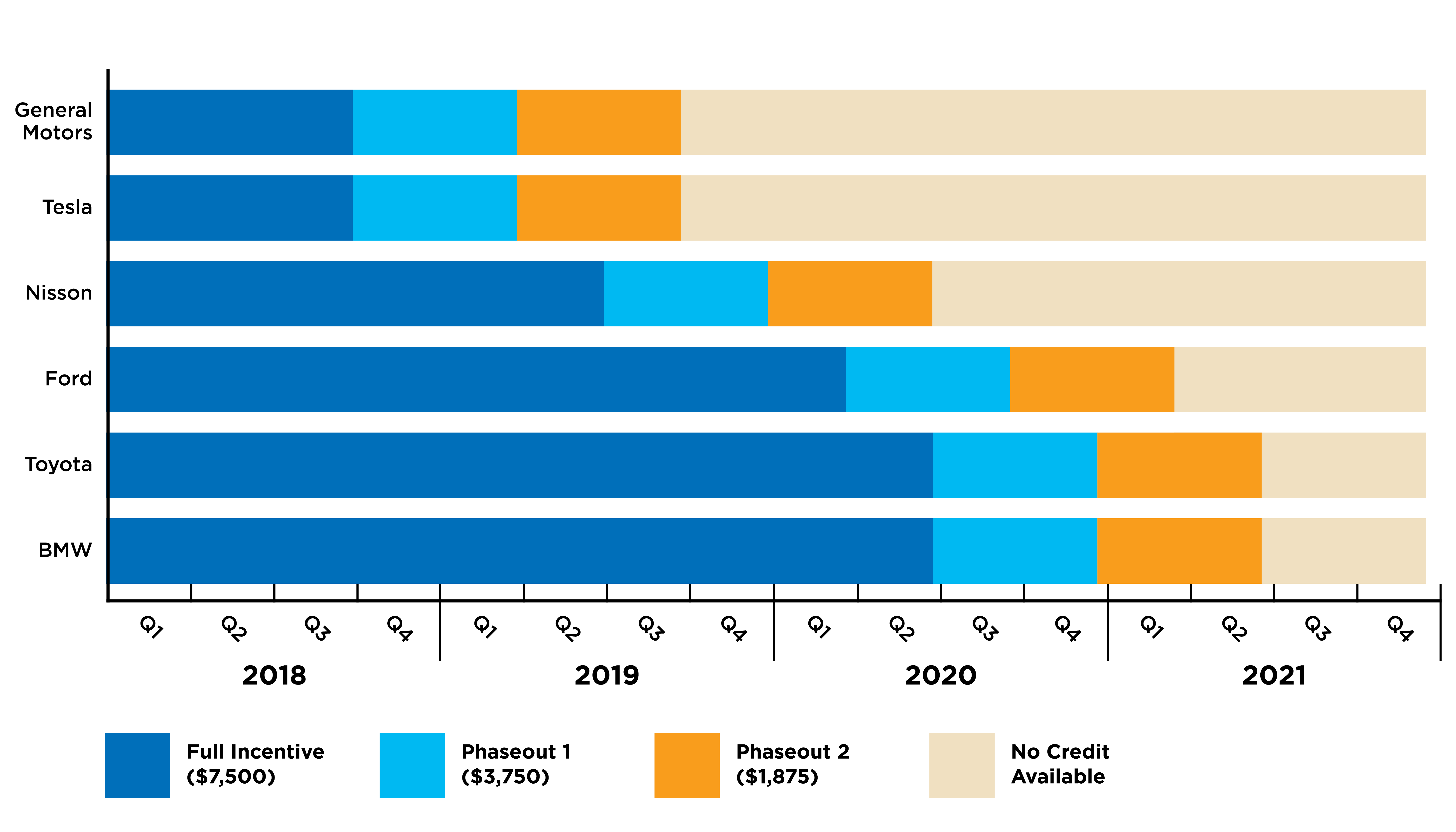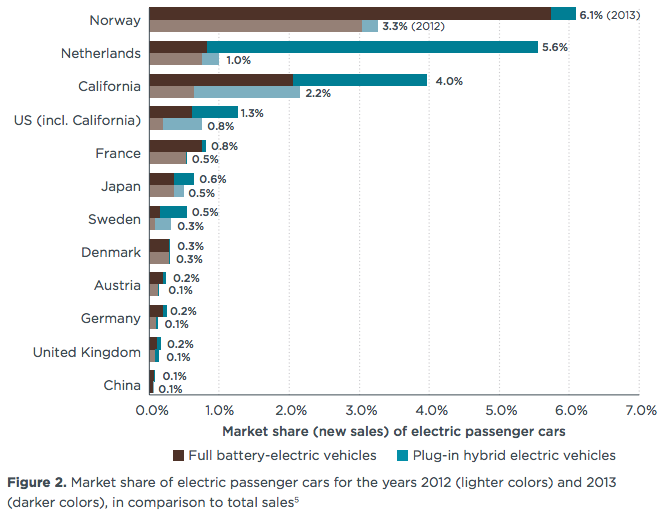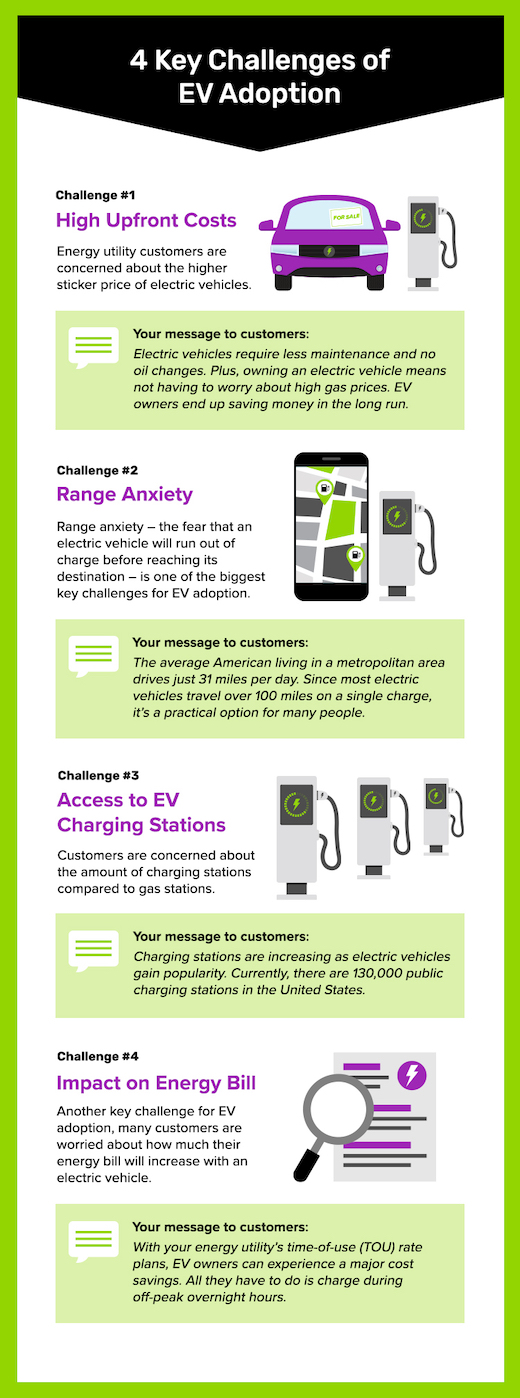The push for EV adoption in the US is riding high. With electric vehicles promising decreased emissions and increased sustainability, they look set to mark a new era in American motoring. We’re not just talking about Tesla; we’re looking at an industry-wide shift. But the road to complete electrification is long, laden with recharging concerns and price barriers. How are financial incentives and government policies helping to pave the way? Let’s plug in and find out.
Why is EV Adoption Important?

Driving an electric vehicle (EV) is more than just a novel way to get from point A to B; it’s a key player in the fight against climate change, a move toward energy independence, and a potential catalyst for economic development.
The first thing that might come to mind when thinking about electric vehicles is their environmental advantages. With no tailpipe emissions, EVs contribute far less to global warming and pollution than their traditional gasoline-powered counterparts. EVs run cleaner even when you factor in the environmental impact of manufacturing and electricity generation, which makes them an essential part of any comprehensive strategy to combat climate change. Plus, as we continue to improve our renewable energy technologies and infrastructure, the environmental advantages of electric vehicles will only become more pronounced.
Looking at EVs from an energy security perspective, they offer a path to decrease our reliance on imported oil. Currently, transportation accounts for the lion’s share of our oil consumption, and that’s a vulnerability with both financial and geopolitical implications. Encouraging EV adoption not only diverts energy consumption away from gasoline to a wider variety of sources (including renewables), but also keeps more of our energy spending within our borders.
Yet, the importance of pushing for accelerated EV adoption doesn’t stop at the environment and energy. The transition to electric mobility can spur domestic job growth and can revitalize local economies. From EV charging infrastructure installation to recycling and battery repurposing initiatives, new business and employment opportunities will be created.
Furthermore, benefiting the end user, EVs can also be more economical to maintain and operate. While the upfront cost of an EV can be higher than that of similar gasoline cars, the total cost of ownership, when you include factors like fuel costs and maintenance, can often be lower with an EV.
However, for all these potential advantages to be realized, a concerted push toward EV adoption is necessary. This is where financial incentives and government policies become significant, encouraging individuals to be early-adopters and ensuring that the necessary infrastructure is in place to support this green transport revival. The future of not just the automotive sector, but the health of the planet and the economy may depend on how successfully we drive EV adoption right now.
Financial Incentives for EV Adoption

There’s no question that putting solid cash upfront to encourage the purchase of electric vehicles (EVs) is a surefire way to get folks to think differently about their car-buying decisions. Let’s talk dollar bills, for instance. The federal government’s Electric Drive Motor Vehicle Tax Credit, which can knock off up to $7,500 from the price tag of a new EV, is currently one of the biggest financial incentives.
However, the IRS was not content to dish out these discounts in perpetuity; there is a caveat. The full credit is only available until a manufacturer sells 200,000 eligible EVs. Thereafter, the credit starts to phase out, dwindling over time until completely disappearing. Tesla and GM are already off the table, their EV sales having climbed past the 200k mark.
While federal assistance takes the lion’s share of the limelight, it’s important to remember the incentives at the state level too, which often fly under the radar. They work out quite delightfully for EV enthusiasts. California, often at the vanguard of green initiatives, offers rebates of up to $7,000 on EV purchases through its Clean Vehicle Rebate Project. Colorado, meanwhile, plays hard ball with a whopping state tax credit of up to $5,000 that comes into effect at the time of purchase, rendering immediate satisfaction rather than making buyers go through the hoops of tax-day paperwork. How’s that for convenience?
Utility companies also want in on the green action. They have started offering juicy discounts on electricity rates for EV owners as well as rebates on home charging equipment. They understand that a future with a higher percentage of EVs requires significant power grid upgrades. These incentives, therefore, represent a long-term investment in their infrastructure.
Despite these incentives, the reality is that EVs are still more expensive than their gas-guzzling counterparts. Yet, the total cost of ownership, factoring in maintenance and fuel costs over the vehicle’s lifetime, often balances out these initial disparities. Moreover, as technological advancements continue to drive down the cost of batteries — the most expensive component of an EV — we’re starting to see that initial purchase costs are beginning to compare favorably with traditional cars.
In summary, the melting pot of federal, state, and utility company incentives for EV adoption not only makes for an appealing financial incentive package, it’s a clear vote of confidence in electric mobility. For the environmentally conscious and the penny pinchers alike, it’s a deal that’s just too good to pass up.
Government Policies Promoting EVs

If we’re talking about steering the wheels of transformation towards electric vehicles (EVs) in the U.S, we cannot sidestep the role of our dear government and their arsenal of policies specifically designed for this purpose. Let’s plug into these a bit, shall we?
Federal, state, and local governments have taken substantial steps in enacting policies to promote EV adoption. These policies aren’t just easy pie in the sky stuff. We’re talking about significant tax credits, low-interest loans for manufacturers—even incentives to construct charging stations. The goal? Bolstering the EV industry and making electric the ‘new normal’ in transportation.
A standout example at the federal level is the Electric Vehicle Tax Credit, which provides a substantial tax credit of as much as $7,500 for anyone willing to go the EV route. It’s a way of siphoning some candy back into your wallet after the arguably steep upfront cost of EVs.
Then we have state-led initiatives with the bite to immensely push EV adoption. Case in point: California’s zero-emission vehicle (ZEV) program. This golden mandate requires automakers to sell a specific number of EVs or risk the revocation of their rights to sell in the state at all. It’s the very embodiment of carrots-and-sticks strategy—only this time, there’s an electric carrot at the end of the stick.
Even at the local level, there’s some juice in the mix. Municipalities are spark-plugging EV adoption by installing charging infrastructure and fostering clean transportation systems. Some cities are even offering free parking for EVs— encouraging a switch for all the coin-pinching drivers out there.
The Department of Energy (DOE) also plays a crucial regulatory role in this electrification drive. They’re powering ahead with programs aimed at reducing the cost of EV batteries, enhancing vehicle efficiency, and increasing the range of EVs. The agency’s work pairs nicely with the National Highway Traffic Safety Administration’s fuel efficiency standards, pushing automakers to improve their EV offerings.
Ultimately, these pro-EV policies aren’t just government feel-goodery. It’s a coordinated effort to transform the transportation landscape, rev up cleaner options, and ultimately, contribute towards tackling climate change—one EV at a time. Indeed, these policies might not electrify the country overnight. But with their continued implementation and the tireless march of technological progress, they’re sure charging up the pace of EV adoption.
Impact of Incentives and Policies on EV Market

Like a race car stirring up dust on a churning track, the game of incentives and policies seems entangled but shows a pronounced effect on the landscape of EV market. The direct correlation is undeniable – with a thrust of incentives, the demand for electric vehicles revs up. Similarly, when government policies are designed to electrify the roads, the market responds with gusto.
The real underpinning to this isn’t complicated but worth emphasizing – when buying an electric vehicle confers immediate cost advantages, it makes the benefits more tangible for the common man. He’s no longer toiling in abstract notions of reduced carbon footprints but dealing with actual dollars saved and a fuller wallet. Incentives, like federal tax credits, rebates, and exemptions have convinced many potential buyers to ride the EV wave.
In the same vein, government policies promoting EVs have also revved up the market response. These policies aim not only to make it easier to own an EV, but also to make it more difficult to own traditional internal combustion engine vehicles. When certain states or cities promise to go completely carbon-neutral by a set deadline or plan to install charging stations at every corner, it’s not merely a poster of intent but a checkered flag waving for a cleaner future.
Perhaps the most prominent policy is California’s Zero Emission Vehicle (ZEV) program. It’s like a switch that California flipped, leading major automakers to start filling the market with electric vehicles. Such tangible steps create alternate paths for consumers to adopt EVs and importantly, they work to shift the collective mindset.
Furthermore, policies don’t operate in isolation. For instance, regulations promoting renewable power generation blend seamlessly with electric vehicle adoption. As the power grid becomes cleaner, the overall carbon footprint of an EV shrinks further, adding more weight to the scale tipping in favor of EV adoption.
In the grand narrative of the EV market story, incentives and policies play the role of strong protagonists, steering the plot towards a climax of wider adoption and lower emissions. The interplay is dynamic and promising, as with each acceleration in policy push or incentive pull, we inch closer to a cleaner, more sustainable transportation future. So, when the rubber hits the road, it’s clear: Policies and incentives are the fuel propelling the EV market forward.
Examples of Successful EV Adoption Due to Policies and Incentives
Let’s start by going to the Golden State – California. It is one of the front-runners in the green movement, and when it comes to electric vehicles, it’s no different. The state offers generous Clean Vehicle Rebate Project (CVRP) incentives, which can total up to $7,000 for EVs. This program is one of several reasons why California boasts the largest number of EVs in the US.
Moving to the northeastern part of the country, we find Massachusetts. Known for their running and clam chowder, the state has also made impressive strides with its Massachusetts Offers Rebates for Electric Vehicles (MOR-EV) program. With rebates of up to $2,500 for new EV purchases, the state is pushing hard towards an electric future.
Next stop is Connecticut. This small but mighty state exists quietly on the EV map, thanks in no small part to the Connecticut Hydrogen and Electric Automobile Purchase Rebate (CHEAPR). This program delivers direct rebates of up to $5,000 for Connecticut residents who buy or lease a new eligible battery, plug-in hybrid electric or fuel cell electric vehicle.
Texas, known for extravagant rodeos and monkey bread, has seen a substantial increase in EV adoption. Love ‘em or hate ‘em, the state achieved a 77% increase in EV sales from 2011 to 2017, according to the Texas Department of Motor Vehicles. A big contributor to this is the state’s “Light-Duty Motor Vehicle Purchase or Lease Incentive Program” which offers a rebate of up to $2,500 for new vehicles that run on compressed natural gas, hydrogen fuel cell, or are electric drives (battery or plug-in).
These examples are just a few demonstrations of how effective policies and incentives have been in spurring EV adoption. Silicon Valley giants like Google and Apple have set up EV-friendly policies for their employees while utilities are devising creative incentives and programs to encourage EV use. What’s clear is that financial carrot, when offered, can power a lot of EV buying decisions. It’s a testament to the undeniable fact that incentives, coupled with viable vehicle choices, play a huge role in the adoption of electric vehicles.
Challenges and Critics on the Path Towards EV Adoption

Despite the impressive progress made in EV adoption, boosted by fiscal incentives and government policies, the path is not without its bumps. Critics and challenges abound, just as they do with any evolving technology striving for mainstream acceptance.
One prime challenge is the prevailing “range anxiety” among car buyers; the fear that an electric vehicle won’t have enough juice to get them from Point A to Point B and the constricted availability of charging stations compared to traditional gas stations. While this fear is mitigated somewhat by tax credits encouraging the installation of home charging stations, it still presents a significant barrier to wider acceptance.
The upfront cost concerns are valid as well. Despite the long-term savings potential in maintenance and fuel, electric cars typically cost more upfront than their gas-guzzling counterparts. For many buyers, it’s an intimidating hurdle, and not everyone will qualify for federal or state incentives that can reduce this cost.
Then, we have the critics who argue that EVs simply swap one source of pollution for another. While EVs may not emit greenhouse gases, the electricity they consume has to be produced somewhere, often by burning fossil fuels. Additionally, the manufacturing process of EVs, particularly their batteries, is more energy-intense, creating a larger carbon footprint than conventional vehicles.
Another criticism is centered on the disparity of benefit accessibility. Despite broadening accessibility, there looms the specter that these incentives are benefitting the well-to-do more than the average citizen. Critics argue that government subsidies are geared largely toward the upper-middle classes who can already afford to buy an EV without fiscal support.
While acknowledging these criticisms and challenges is essential, they should not overshadow the strong case for continued EV adoption. Effective counteraction includes improving charging infrastructure, finding ways to make EVs more affordable out of the gate, transitioning to more sustainable electricity generation methods, and refining the manufacturing process to reduce its carbon footprint. Policymakers should also ensure incentives are democratized to cover buyers from all socioeconomic strata to prevent any perceived ‘green elitism.’ After all, the path towards sustainability is a shared journey, not a first-class ticket for the comfortable few.
Future of EV Adoption in the US

As we steer our proverbial vessels into the uncharted waters of the future, one thing appears undeniably certain: electric vehicles, or EVs, are a rising tide in the American automotive industry. Experts predict that up to 30% of new cars will be electric by 2025, a surge largely driven by ongoing improvements in both affordability and battery technology, coupled with mounting societal pressure to combat climate change.
However, this landscape of steady and certain electrification is catching the wind from a confluence of many other factors as well — innovation at the policy level, burgeoning public and private sector partnerships, fueling infrastructure development, and an expanding secondary market for used EVs.
To start with, government policies advancing EVs will be instrumental in reach the EV takeover. The rumblings are already there: stringent emission norms, the pledge of an all-electric federal vehicle fleet, initiatives for a nationwide charging network, and talks of refiguring the federal EV tax credit.
Sure, the landscape will be further shaped by market-driven factors but let’s not overlook the powerful role of government incentives – whether they’re direct economic incentives or indirect measures like access to HOV lanes or preferential parking spots. These small perks could be the sweet deal maker for prospective owners sitting on the fence.
The future would also require auto manufacturers and utility companies to jump on the bandwagon, unifying to ensure that recharging EVs doesn’t become a behemoth task. Partnerships between these entities, along with government backing, could drive the wide-scale installation of fast charging stations, making ‘range anxiety’ a thing of the past.
Lastly, the future of EVs would derive immense strength from a robust used-car market. As more people buy electric, more used EVs will make it to the market, making them a financially viable option for a wider audience. Dealers will need to tap into this resource, pushing affordable second-hand EVs to those who are cost-conscious but still want to go green.
So, don your captain’s hat and get ready to ride the wave of a transformative future. A future where the American roads are teeming with green, efficient, whisper-quiet EVs. The sum of all these moving parts hints at more than just a possibility; it’s about when, not if, the electric takeover will reach its tipping point.
FAQs
What are the benefits of financial incentives for EV adoption?
How is the government promoting EV adoption?
Are these policies effective?
Conclusion
In conclusion, while America is revving up efforts to switch to electric vehicles, financial incentives and policy support remain crucial accelerators. Striking a balance between affordability for the consumers and feasibility for the industry forms the bedrock of promoting EV adoption. As the switch to sustainable mobility becomes non-negotiable, the policy debates should center more on ‘how’ rather than ‘if’ to incentivize the transition. Ultimately, the EV revolution is not just about cars—it’s about reshaping an entire eco-system and making green the new grammar of our roads.
